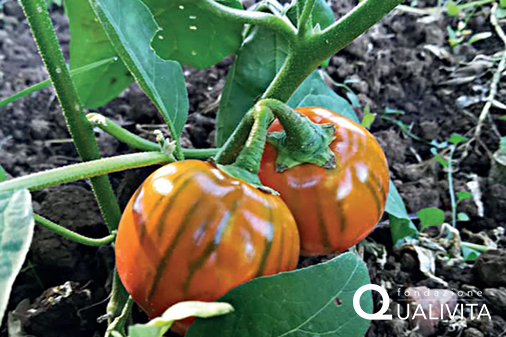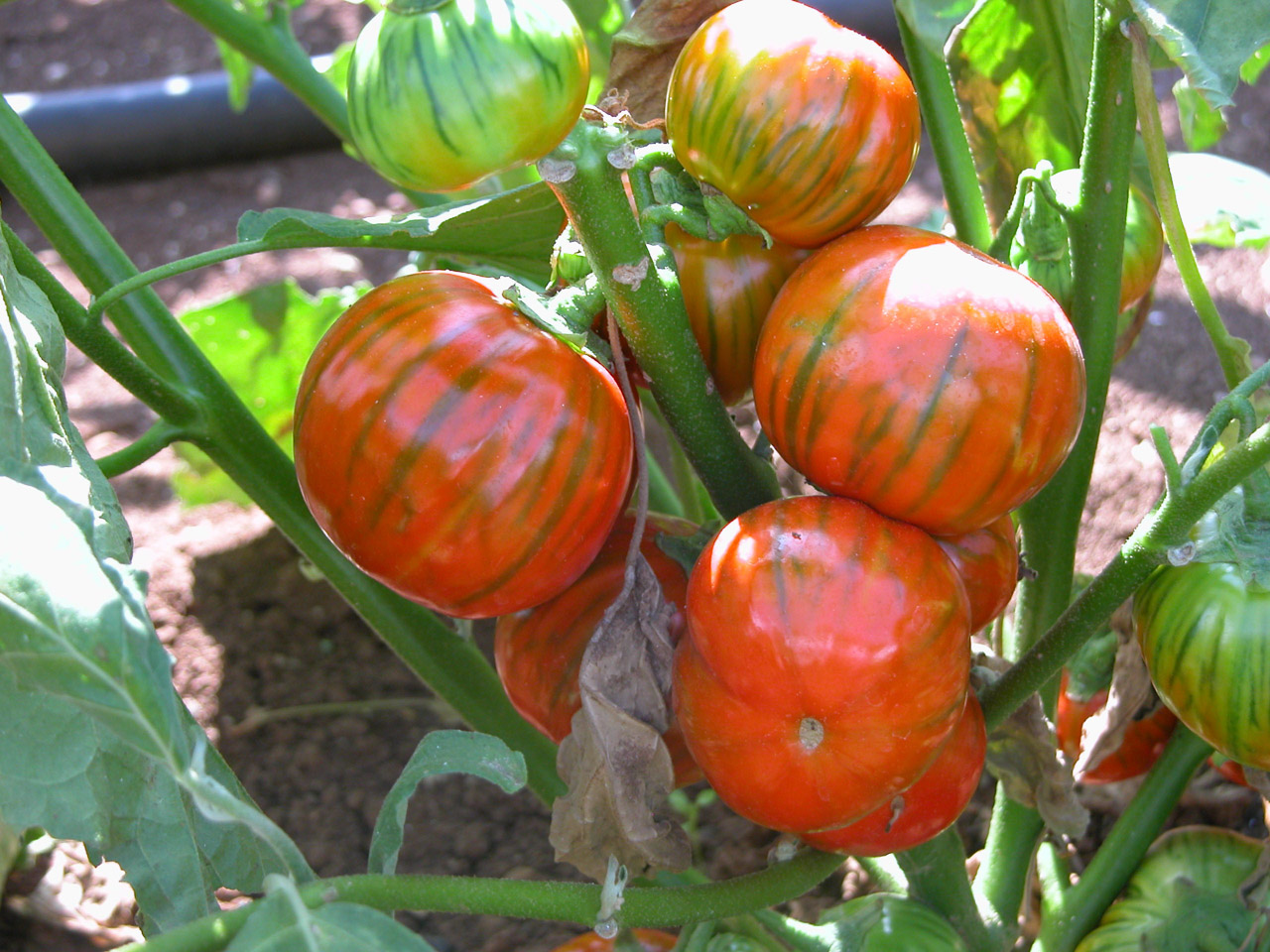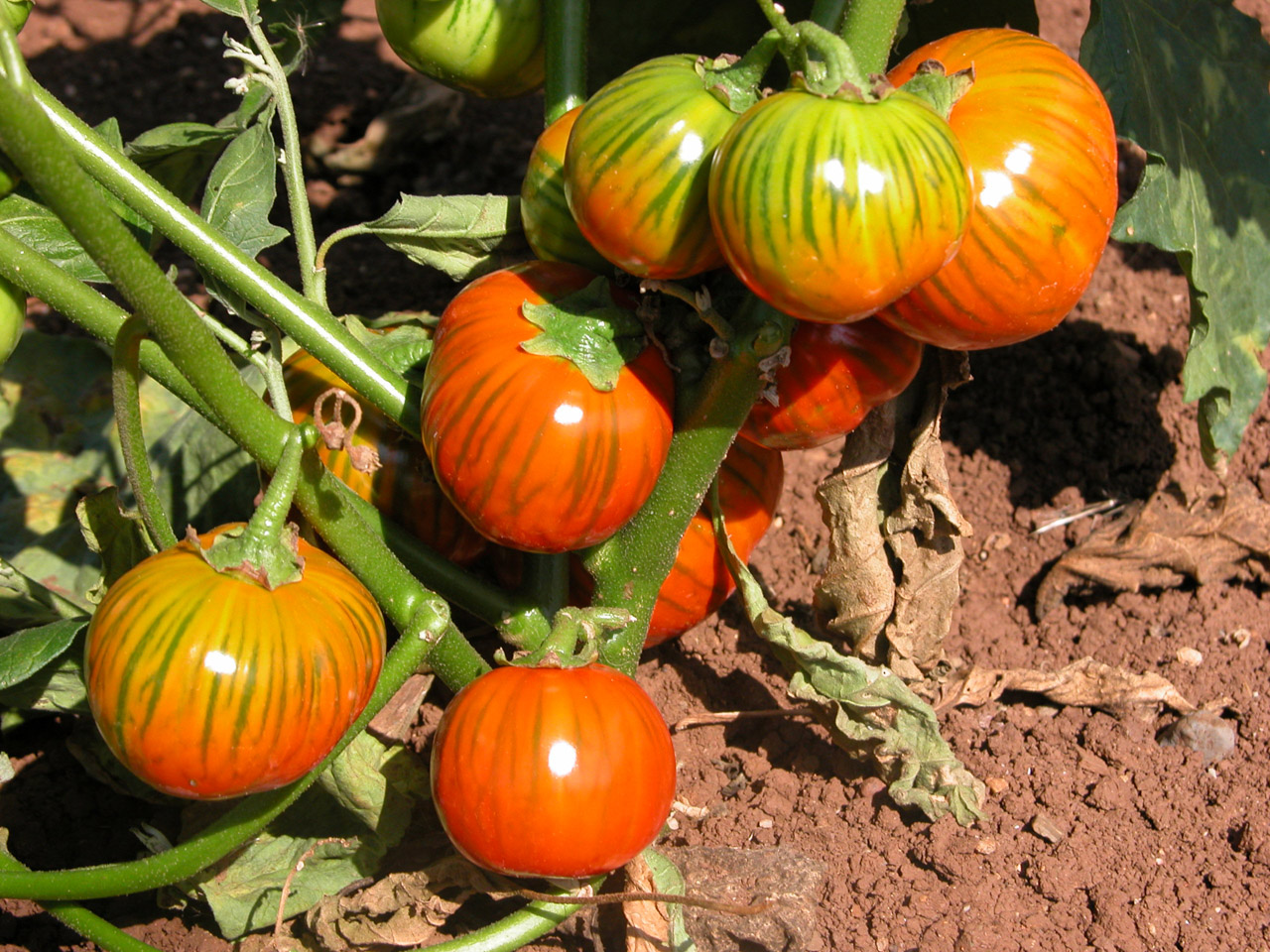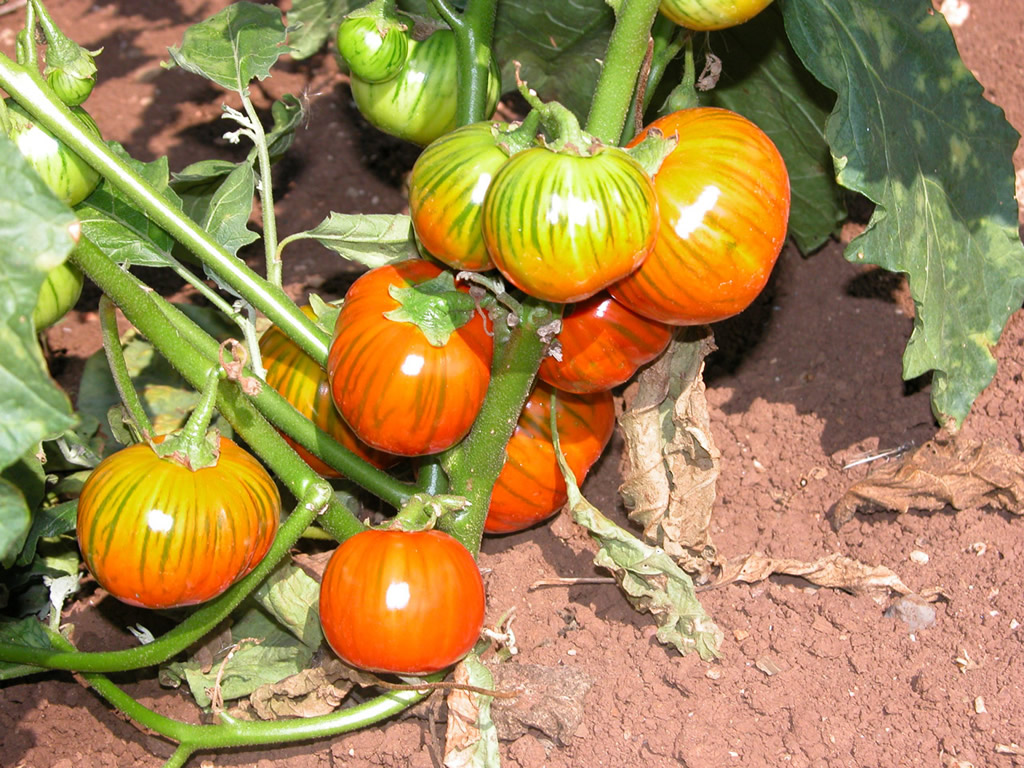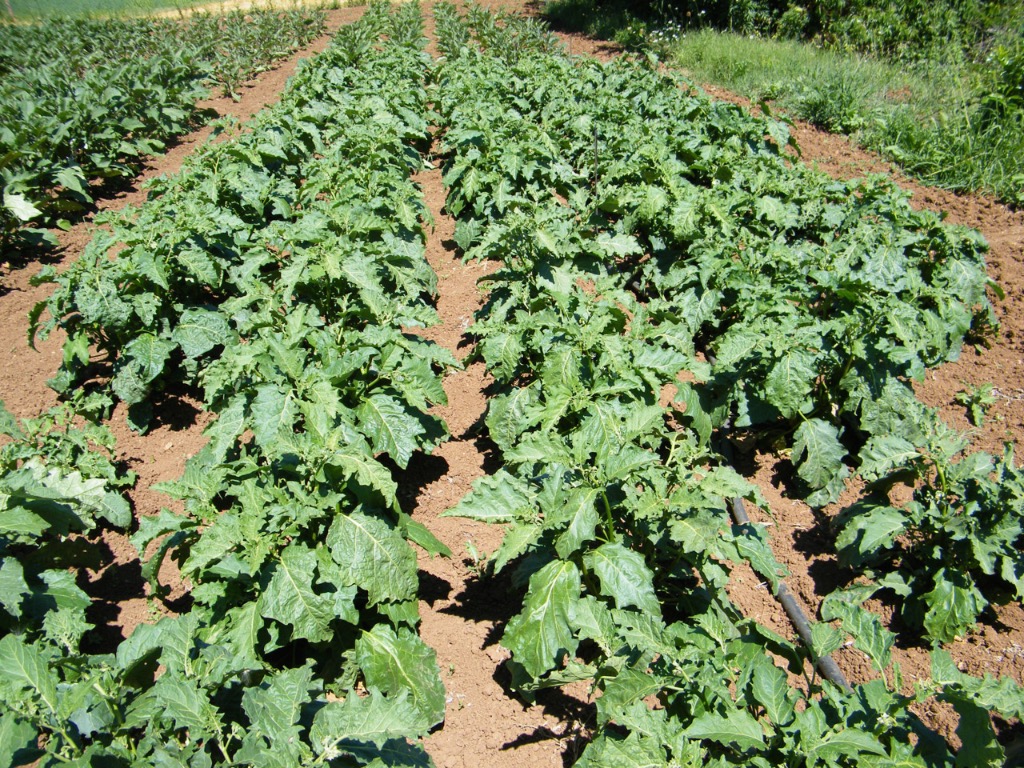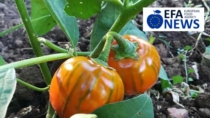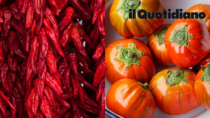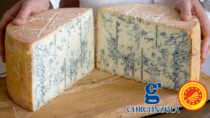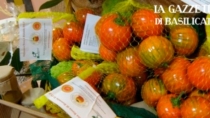Description
Melanzana Rossa di Rotonda PDO is a fresh aubergine belonging to the species Solanum aethiopicum, deriving from the Melanzana Rossa di Rotonda ecotype.
Production Area
The production area of Melanzana Rossa di Rotonda PDO is within the municipalities of Rotonda, Viggianello, Castelluccio Superiore and Castelluccio Inferiore, in the Province of Potenza, in the Basilicata region.
Production Method
The soil is ploughed to prepare the ground for planting. Transplanting takes place between May and June, using 10-15 cm high plants with 3-5 leaves, which are planted in previously prepared furrows. The seedlings must originate from the production area and must be planted according to the plantation layouts and distances used in the area. The crops are fertilised with organic substances or green manure. Harvesting starts in July and lasts until November. It is carried out by hand with the aid of secateurs, cutting only a small part of the stalk. The maximum permitted production is 60 tonnes per hectare.
Appearance and Flavour
Melanzana Rossa di Rotonda PDO has a roundish shape, similar to a tomato, and weighs up to 200 g. When it starts to ripen, the skin has shades of green, while the ripe fruit is bright orange to shiny red. The pulp is fleshy with a strong fruity fragrance, reminiscent of prickly pear; it has a piquant flavour, with a pleasantly bitter finish.
History
Melanzana Rossa di Rotonda PDO has African origins. During the colonial era, many families from Rotonda moved to the new lands conquered by the fascist regime in order to find work. In 1935, before the eruption of the Ethiopian war, those who returned home brought a “peculiar” aubergine with them. This species adapted so well to the area that it evolved into something different from the African variety from which it originated; it had the same orange colour, but without stripes, and was more elongated. Due to this particular characteristic, which makes it similar to a tomato, this aubergine is known as merlingiana a pummadora (tomato aubergine) in the local dialect. From the beginning of the 20th century, there are many oral and written confirmations of the wide use of this aubergine, such as interviews with the older farmers in Rotonda, carried out for a CNR survey in 1992. Today the red aubergine is still being talked about on TV shows, in cookbooks and specialised magazines, as well as during the traditional and crowded festival that is organised annually in its honour.
Gastronomy
Fresh Melanzana Rossa di Rotonda PDO should be stored in a cool, dry place or in the refrigerator. Traditionally they are stored nzertate, meaning tied in bunches and hung from the roof to dry. They are also very good preserved in oil and pickled. There are numerous recipes from the Lucan cuisine celebrating this peculiar product: fried and seasoned with mint and garlic; combined with Caciocavallo Podolico cheese in a sauce for fusilli pasta; mixed with sausage to make delicious meatballs. The leaves can also be used, as they are much tenderer than other varieties of aubergines, as well as being a different shape and size.
Marketing
The product is marketed as Melanzana Rossa di Rotonda PDO. It is available from July to November and is sold fresh in boxes made from plant-based materials, cartons, or in plastic nets or other recyclable materials: for the latter, the weight can be no more than 1 kg.
Distinctive Features
Melanzana Rossa di Rotonda PDO is characterised by a low chromogenic acid content of about 800 ppm, compared to the 4300 ppm of other products belonging to the same species. This value allows the pulp to maintain its white colour, even after the aubergine has been cut.





